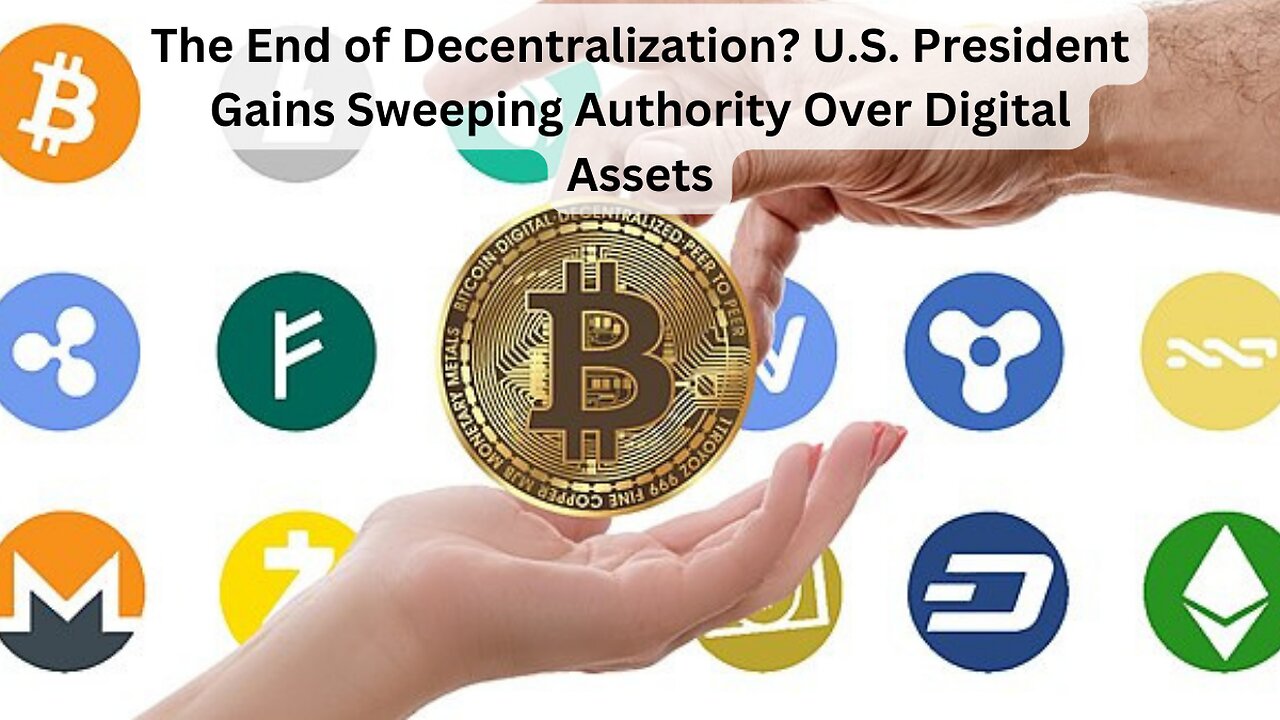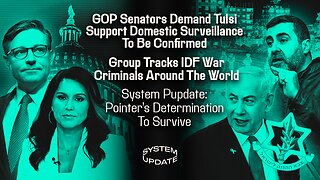Premium Only Content

The End of Decentralization? U.S. President Gains Sweeping Authority Over Digital Assets
A recent U.S. law grants the president unprecedented authority to restrict access to digital assets, raising significant concern over its far-reaching implications and potential impact on users. On June 6, Scott Johnsson, a notable figure in the digital assets field, criticized the law’s broad scope, stating:
"It’s difficult to perceive this as anything other than a presidential ban aimed at the user level, granting the President the power to inhibit any protocol or smart contract identified by the Treasury Secretary as being 'controlled, operated or made available' by a foreign sanctions violator. The breadth of its scope and implications are staggering, potentially corralling users into KYC/permissioned chains."
On June 5, a user on the X platform highlighted Sen. Mark Warner’s (D-VA) strategic insertion of legislative components, laying the groundwork for the president’s new sweeping powers over digital assets.
The legislation broadly defines "digital assets" to include any digital representation of value recorded on cryptographically secured distributed ledgers, such as communication protocols, smart contracts, or similar software facilitating user interactions and trade agreements for digital assets. (Related: Digital kill switches: How tyrannical governments stifle political dissent.)
Under this law, the president can block transactions between U.S. individuals and foreign entities identified as supporters of terrorist organizations. This includes imposing stringent conditions on foreign financial institutions maintaining accounts in the U.S. if they are found to facilitate such transactions.
Johnsson's analysis underscores the law's extensive reach, potentially forcing users to migrate towards Know Your Customer (KYC)-compliant and permissioned blockchain networks, thus restricting them to regulated blockchains. He cautions against viewing this move as an attempt to assert control over digital assets under the guise of counterterrorism efforts.
The legislative components allegedly introduced by Warner, which enable this presidential authority, draw inspiration from the Terrorism Financing Prevention Act introduced in December 2023. This Act empowers the U.S. Treasury Department to address emerging threats involving digital assets.
While not yet law, this legislation could fly under the radar unless significant public outcry prompts action. Such comprehensive bills, often laden with myriad provisions, may go unnoticed until they become effective, making vigilant scrutiny imperative.
### What are Digital Assets?
Digital assets encompass any item in a digital format, including usage rights. Prominent examples include those associated with cryptocurrency and blockchain technology, such as cryptocurrencies, non-fungible tokens (NFTs), and virtual real estate within the metaverse.
Digital assets span a wide range of items, from photos and videos to documents. For instance, a photograph stored on a phone or computer qualifies as a digital asset due to its digital format and the user's rights as the creator, enabling publication on a website or potential sale.
While the overarching concept of digital assets is comprehensible, their categories can be diverse, with investment-grade assets often presenting greater complexity. To elucidate further, let's delve into two significant types: cryptocurrencies and NFTs.
**Cryptocurrencies** are digital currencies that utilize cryptography and operate on decentralized networks. These networks, devoid of central oversight, rely on a distributed network of devices to validate and record transactions, achieving decentralization.
**NFTs** (non-fungible tokens) denote ownership of a digital asset. For example, minting an NFT for a photograph establishes a digital record affirming ownership. Subsequent transfer of the NFT to another party designates them as the new owner, with creators having the option to levy royalties on future sales.
NFTs represent a notable innovation in the realm of digital assets, facilitating ownership verification and streamlining transactions for various digital assets. In instances where disputes arise over usage rights, NFTs serve as authoritative records to resolve such conflicts.
Decentralized digital assets like cryptocurrencies and NFTs leverage blockchain technology to operate independently of central authorities. A blockchain, functioning as a transparent ledger, records cryptocurrency transactions in blocks, which are subsequently validated and appended to the chain by network nodes.
-
 3:59
3:59
Conspiracy Chronicle
25 days agoRadioactive Shipment Disappears in New Jersey—Are Drones on the Hunt?
1261 -
 1:26:05
1:26:05
Glenn Greenwald
10 hours agoGOP Senators Demand Tulsi Support Domestic Surveillance To Be Confirmed; Group Tracks IDF War Criminals Around The World; System Pupdate: Pointer's Determination To Survive | SYSTEM UPDATE #387
105K65 -
 57:27
57:27
Flyover Conservatives
1 day agoHealthy People Are Ungovernable: The Secrets They Don’t Want YOU to Know - Tracy Beanz | FOC Show
51.9K6 -
 8:36:11
8:36:11
Dr Disrespect
16 hours ago🔴LIVE - DR DISRESPECT - DELTA FORCE - INTENSE SITUATIONS ONLY!
246K27 -
 4:01:30
4:01:30
Nerdrotic
13 hours ago $34.59 earnedHollywood National DISASTER! Studios Terrified, Star Wars FAIL | Friday Night Tights 336 w Raz0rfist
144K45 -
 2:52:10
2:52:10
Edge of Wonder
12 hours agoLA Fires: Biblical Inferno as Hollywood Burned Down
46.4K17 -
 12:35
12:35
China Uncensored
11 hours agoHas the Coverup Already Begun?
59.1K31 -
 1:09:12
1:09:12
The Big Mig™
14 hours agoLet’s Talk Music “Karmageddon” w/ Iyah May
45.7K8 -
 1:00:22
1:00:22
Sarah Westall
9 hours agoLoss of Confidence in the Medical System, Real Facts and Data w/ Dr. Michael Schwartz
46.6K5 -
 55:08
55:08
LFA TV
1 day agoThe Cause of ‘Natural’ Disasters | TRUMPET DAILY 1.10.25 7pm
39.3K14